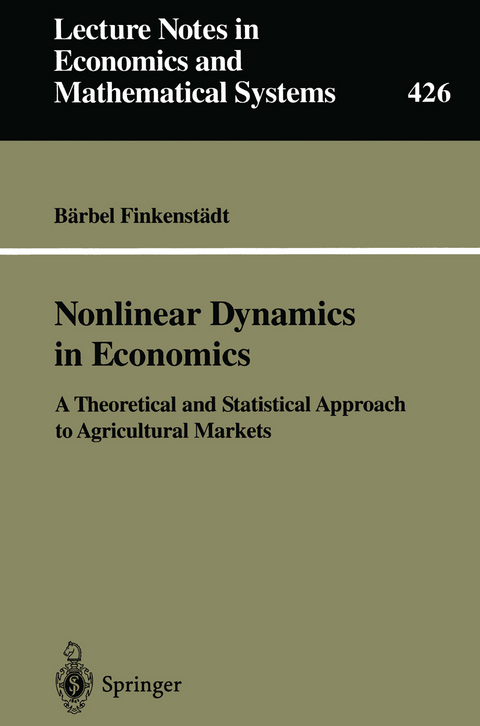
Nonlinear Dynamics in Economics
Springer Berlin (Verlag)
9783540593744 (ISBN)
1 Introduction.- 1.1 Introduction.- 1.2 The dynamics of the first order difference equations.- 1.3 Higher dimensional systems.- 1.4 What is chaos?.- 1.5 Chaos versus random noise.- 1.6 Chaos and statistics.- 2 A Nonlinear Cobweb Model.- 2.1 Introduction.- 2.2 The cobweb model.- 2.3 The model.- 2.4 Qualitative behavior.- 2.5 Summary.- 2.6 Appendix.- 3 Are Time Series From Agricultural Markets Nonlinear? The Case of German Prices.- 3.1 Introduction.- 3.2 The data.- 3.3 Correlation integral methods.- 3.4 A nonlinear analysis of the time series.- 3.5 Appendix: Results of linear model fitting.- 4 A Nearest Neighbor Approach to Forecast Nonlinear Time Series.- 4.1 The forecasting algorithm.- 4.2 A robust test.- 4.3 A simulation study.- 4.4 Results for commodity price series.- 4.5 Summary.- 4.6 Appendix: Simulation study results.- 4.7 Results for residuals of linear models fitted to the growth rates.- 5 Conclusions and Outlook.- 5.1 Summary and conclusions.- 5.2 Outlook: Modeling nonlinear time series.
| Erscheint lt. Verlag | 14.7.1995 |
|---|---|
| Reihe/Serie | Lecture Notes in Economics and Mathematical Systems |
| Zusatzinfo | IX, 156 p. |
| Verlagsort | Berlin |
| Sprache | englisch |
| Maße | 155 x 235 mm |
| Gewicht | 240 g |
| Themenwelt | Mathematik / Informatik ► Mathematik |
| Wirtschaft ► Volkswirtschaftslehre ► Ökonometrie | |
| Weitere Fachgebiete ► Land- / Forstwirtschaft / Fischerei | |
| Schlagworte | Correlation • Fitting • Nichtlineare Abhängigkeit • Nonlinear Dynamics • parameterfreie Statistik • Statistica • Time Series • Zeitreihen |
| ISBN-13 | 9783540593744 / 9783540593744 |
| Zustand | Neuware |
| Informationen gemäß Produktsicherheitsverordnung (GPSR) | |
| Haben Sie eine Frage zum Produkt? |
aus dem Bereich


